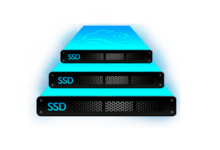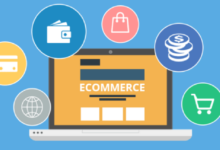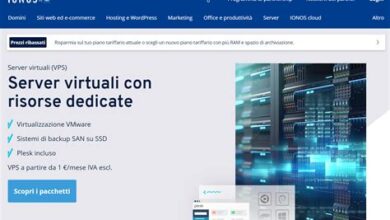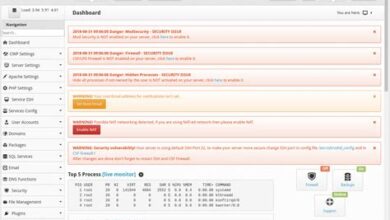Website Building and Hosting: A Comprehensive Guide for Beginners
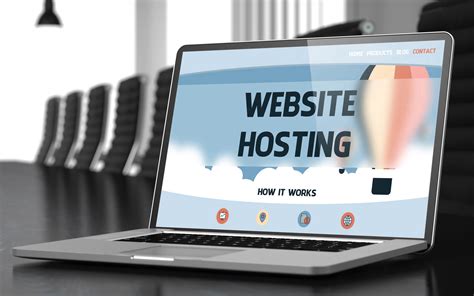
Do you want to establish your online presence but don’t know where to start? In this comprehensive guide, we will walk you through the process of website building and hosting. Whether you are a small business owner, a freelancer, or an aspiring blogger, having a website is crucial for reaching a wider audience and maximizing your online success. We will cover everything from website creation to hosting, ensuring that you have all the necessary knowledge to build a professional and user-friendly website. Let’s dive in!
Website Building and Hosting Explained
Before we delve into the details, let’s understand the concept of website building and hosting. Website building refers to the process of creating a website from scratch, including designing its layout, adding content, and implementing functionality. On the other hand, web hosting is the service that allows individuals or organizations to make their website accessible on the internet. Without hosting, your website would not be visible to the public.
Having a website is like having your own virtual storefront. It is an effective way to showcase your products, services, or content to a global audience. A well-designed and well-optimized website can significantly impact your online presence and business growth. Now, let’s explore the key steps involved in website creation and hosting.
Step 1: Define Your Website’s Purpose and Audience
Before you start building your website, it’s important to define its purpose and target audience. Ask yourself:
- What is the main goal of my website? Is it to promote my business, sell products, or share information?
- Who is my target audience? Are they young professionals, parents, or hobbyists?
Understanding your website’s purpose and audience will help you tailor its design, content, and functionality to meet their specific needs. It will also guide your decisions regarding branding, tone of voice, and overall user experience.
Step 2: Choose the Right Website Building Platform
Once you have a clear understanding of your website’s purpose, it’s time to choose the right website building platform. There are several options available, each with its own features, advantages, and learning curve. Here are some popular platforms:
- WordPress: Known for its versatility and ease of use, WordPress is a popular choice for both beginners and experienced users. It offers a wide range of themes and plugins to customize your website.
- Wix: If you prefer a drag-and-drop interface and pre-designed templates, Wix may be the right platform for you. It is beginner-friendly and allows you to create visually appealing websites.
- Squarespace: Suitable for creatives and small businesses, Squarespace provides elegant templates and an intuitive interface. It also offers built-in e-commerce functionality.
Consider your technical skills, budget, and desired features when choosing a website building platform. It’s essential to select one that aligns with your needs and goals.
Step 3: Design and Customize Your Website
Once you have chosen a website building platform, it’s time to design and customize your website. This is where you can get creative and bring your vision to life. Here are some tips:
- Choose a visually appealing theme or template that reflects your brand identity.
- Add your logo, color scheme, and any other brand elements to maintain consistency.
- Organize your content in a logical and easy-to-navigate manner.
- Optimize your website for mobile devices to ensure a seamless user experience.
Remember, a well-designed website is visually appealing, user-friendly, and aligns with your brand identity. Keep these factors in mind as you customize your website.
Step 4: Create Compelling and Engaging Content
Content is the heart of any successful website. It informs, entertains, and engages your audience. Here are some key content elements to consider:
- About page: Introduce yourself, your business, or your brand to establish credibility and build trust.
- Product or service pages: Highlight the features and benefits of your offerings, including enticing visuals, testimonials, and pricing information.
- Blog: Share valuable insights, industry news, or personal stories to keep your audience informed and engaged.
- Contact page: Make it easy for visitors to get in touch with you by providing contact information and a contact form.
When creating content, ensure it is informative, concise, and easy to read. Use visuals such as images, videos, and infographics to enhance the overall user experience.
Step 5: Optimize Your Website for Search Engines
Now that your website is built and your content is in place, it’s crucial to optimize your website for search engines. This process, known as search engine optimization (SEO), helps your website rank higher in search engine results pages (SERPs). Here are some essential SEO practices:
- Keyword research: Identify relevant keywords and incorporate them naturally into your website’s content.
- Meta tags: Craft compelling meta titles and descriptions to entice users to click on your website in search results.
- URL structure: Use descriptive URLs that include keywords to improve search engine visibility.
- Page speed: Optimize your website’s loading speed to improve user experience and search engine rankings.
By implementing SEO best practices, your website will be more likely to attract organic traffic and rank higher in search engine results.
Step 6: Choose a Reliable Web Hosting Provider
Now that your website is ready to go live, it’s time to choose a reliable web hosting provider. Web hosting is the service that allows your website to be accessible on the internet. Here are some factors to consider when selecting a web hosting provider:
- Uptime: Choose a provider with a high uptime guarantee to ensure your website is always accessible.
- Speed and performance: Opt for a hosting provider that offers fast server response times and reliable performance.
- Scalability: Consider your future growth and choose a hosting provider that can accommodate increased traffic and resource demands.
- Customer support: Look for a hosting provider with responsive and knowledgeable customer support to assist you with any technical issues.
It’s important to choose a web hosting provider that meets your website’s requirements, as it can impact its performance, security, and user experience.
Frequently Asked Questions (FAQs)
1. What is the difference between a domain name and web hosting?
A domain name is the address of your website, such as www.example.com. It is what users type in their browsers to access your website. Web hosting, on the other hand, is the service that stores your website’s files and makes them accessible to visitors. Think of the domain name as the address and web hosting as the physical space where your website resides.
2. Can I build a website without any coding knowledge?
Absolutely! Website building platforms like WordPress, Wix, and Squarespace offer user-friendly interfaces and pre-designed templates that allow you to build a website without any coding knowledge. These platforms provide intuitive drag-and-drop editors and customization options that make website creation accessible to beginners.
3. How much does it cost to build and host a website?
The cost of building and hosting a website varies depending on several factors, such as the website building platform, domain name registration, web hosting provider, and additional features or services you may require. Generally, you can expect to pay anywhere from a few dollars per month to a few hundred dollars per month for a professional website.
4. Can I change my website’s design after it’s built?
Yes, you can change your website’s design even after it’s built. Website building platforms allow you to customize your website’s theme, layout, and content at any time. However, major design changes may require more effort and might impact your existing content and functionality. It’s advisable to backup your website before making significant design changes.
5. How do I ensure my website is secure?
Ensuring the security of your website is crucial to protect your data and your visitors’ information. Here are some essential security measures:
- Keep your website CMS and plugins up to date to patch any security vulnerabilities.
- Use strong, unique passwords for your website’s admin accounts.
- Install a reliable security plugin or a firewall to detect and prevent malicious attacks.
- Regularly backup your website to restore it in case of any security breaches.
6. How can I improve my website’s loading speed?
Optimizing your website’s loading speed is crucial for providing a positive user experience and improving search engine rankings. Here are some tips to improve your website’s loading speed:
- Compress and optimize your images to reduce file size without compromising quality.
- Minify and combine your CSS and JavaScript files to reduce the number of requests made by the browser.
- Enable browser caching to store static files and assets, reducing load times for returning visitors.
- Use a content delivery network (CDN) to deliver your website’s content from servers closer to the user’s location.
Conclusion
Building and hosting a website can be an exciting and rewarding journey. By following the steps outlined in this comprehensive guide, you are well on your way to creating a professional and user-friendly website. Remember to define your website’s purpose and audience, choose the right website building platform, design and customize your website, create compelling content, optimize for search engines, and select a reliable web hosting provider. Regularly update your website’s content, monitor its performance, and stay informed about the latest web design and development trends. With the right approach and dedication, your website will become a valuable asset for your personal brand, business, or online presence.

